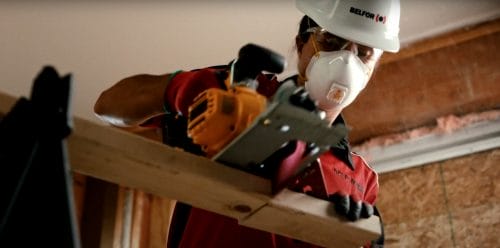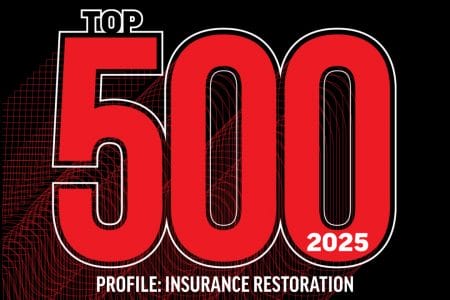What Is Soot? Causes, Dangers, and How To Remove It
What Is Soot: Key Points
- Soot is made of fine carbon particles and other harmful residues left behind after fires, furnace malfunctions, or puffbacks
- Soot particles travel through HVAC systems, coat surfaces, and embed in walls, ceilings, and electronics
- Exposure can irritate lungs, worsen respiratory conditions, and corrode household items
- Dry soot, oily soot, and soot tags each require different cleanup methods
- Specialized tools like HEPA vacuums, air scrubbers, and chemical sponges are required for safe and thorough removal
Every year, nearly 500,000 structure fires are reported in the U.S., and the aftermath often includes one persistent threat – soot.
Soot may look like a thin layer of black dust, but don’t let its appearance fool you – it’s a stubborn, hazardous byproduct of incomplete combustion that can pose serious risks to both health and property.
In this guide, you’ll learn:
- What soot really is and where it commonly comes from
- Why it poses serious health and property risks
- How professional cleanup works (and why DIY can make it worse)
- Tips for preventing future soot damage
CTA: Get soot removal with BELFOR’s help. Get in touch.
What Is Soot and How Does It Form?
Soot is a fine black or brown powder composed primarily of carbon particles created through incomplete combustion of carbon-based fuels like wood, coal, oil, or gas.
While it might look relatively harmless, soot is a dangerous byproduct that clings to surfaces, infiltrates HVAC systems, and pollutes indoor air long after the fire or malfunction is gone.
It’s more than a surface stain; soot can damage electronics, corrode metal, degrade air quality, and pose serious health risks if not handled correctly.
Types of Soot and How Professionals Remove Them
Each type of soot requires a targeted removal method to prevent further damage:
Dry Soot
This type of soot is common after high-temperature, fast-burning fires.
- Origin: High-oxygen, fast-burning fires (e.g., paper or wood).
- Characteristics: Fine, powdery residue.
- Removal: Best addressed with dry cleaning sponges and HEPA vacuums – no moisture, to avoid smearing.
Oily (Wet) Soot
Often found after smoldering fires or furnace puffbacks, oily soot is heavier and more stubborn.
- Origin: Low-oxygen or smoldering fires, furnace puffbacks.
- Characteristics: Sticky, smeared appearance.
- Removal: Requires chemical sponges and degreasers to lift residue safely.
Protein-Based Soot
Caused by kitchen fires involving burnt food or grease, protein soot is one of the trickiest to detect and remove.
- Origin: Kitchen fires involving meat or grease.
- Characteristics: Virtually invisible, sticky, strong odor.
- Removal: Needs enzymatic cleaners to break down the tough residue.
Soot Tags
These eerie, web-like strands are sometimes mistaken for cobwebs, but they’re anything but harmless.
- Origin: Cooler, slow-burning fires.
- Characteristics: Web-like formations often mistaken for cobwebs – but highly acidic.
- Removal: Must be cleaned using targeted, safe removal techniques to prevent surface etching or staining.
Pro tip: Misidentifying soot types can spread the damage. Always consult professionals trained in fire restoration techniques.
A Closer Look at Soot: Incomplete Combustion
Soot forms when organic materials burn incompletely, meaning the fire doesn’t reach a high enough temperature or doesn’t have enough oxygen to burn cleanly.
Instead of turning entirely to gas and heat, the combustion releases microscopic particles such as soot that stick to surfaces and float through the air.
Pro tip: Even low-heat sources, like candles or space heaters, can create soot buildup over time, especially in homes with poor ventilation.
Common Sources: Fire Damage, Furnaces, and Puffbacks
Soot isn’t only caused by major or fully engulfed structure fires. Even smaller, quickly contained fires can leave potentially damaging soot behind.
It can come from:
- Small house fires or kitchen flare-ups: Any fire, even if contained quickly, can create significant soot deposits in a short time.
- Furnace malfunctions and puffbacks: A puffback occurs when an oil-burning furnace misfires, sending oily soot throughout a home or business.
- Chimneys or fireplaces: Inadequate chimney ventilation or lack of cleaning allows soot to backdraft into living areas
- Candles or cooking: Surprisingly, frequent use of scented candles or high-heat cooking can leave behind soot residue – especially on ceilings and near vents.
Why Soot Is Dangerous
Soot may seem like just another cleanup task after a fire or furnace puffback, but its risks go far beyond stained walls.
These microscopic particles can infiltrate your property and body, causing serious health issues, long-term damage to your home or business, and invisible threats to electronics and structural integrity.
That’s why proper cleanup isn’t optional – it’s essential.
Health Hazards: Respiratory Irritants and Toxic Particles
Soot contains fine particulate matter (PM2.5) that easily enters the lungs and bloodstream. It’s a known respiratory irritant that can worsen asthma, bronchitis, and other lung conditions.
- Soot may contain cancer-causing chemicals like benzene and formaldehyde, especially when plastics, fuels, or chemicals are involved.
- Children, seniors, and individuals with pre-existing conditions are particularly vulnerable.
Pro tip: If you experience a lingering cough or irritation after a fire – even a small one – there may still be harmful soot particles in the air or ducts.
Long-Term Property Damage
Soot isn’t just a surface issue – it’s acidic.
- When left untreated, it can slowly eat away at paint, drywall, flooring, fabrics, and finishes, leading to staining, warping, or complete deterioration.
- The longer soot sits, the more difficult and expensive the restoration becomes.
Pro tip: Even if you can’t see soot, it may have settled into porous materials like insulation, carpeting, or furniture. This is where a professional inspection becomes crucial.
Electrical Risks and Corrosion of Devices
Soot can settle inside electrical outlets, appliances, and circuit boards.
- Its conductive and corrosive nature increases the risk of short circuits, malfunctions, and even fires down the line.
- Sensitive electronics like computers, routers, or HVAC systems can become permanently damaged if soot enters their components.
Pro tip: Don’t turn on electronics that have been exposed to soot. Let a restoration professional evaluate and clean the internals before use.
How To Clean Up Soot Safely and Effectively
Soot removal service is a specialized process that requires expert knowledge, advanced tools, and strict safety protocols.
This section walks you through what not to do, how professionals clean different types of soot, and how they ensure your space stays clean long after the job is done.
What Not To Do: Why DIY Cleaning Can Make It Worse
Trying to scrub away soot with household cleaners or water can do more harm than good. Soot is highly acidic and can stain, smear, or penetrate deeper into porous surfaces when cleaned improperly.
Using a vacuum without a HEPA filter can re-aerosolize fine particles, pushing them into the air and across clean areas. Worse, scrubbing oily soot (often from puffbacks) can create permanent damage on walls and furniture.
Pro tip: Avoid touching or disturbing soot-damaged areas. Wait for a professional to assess the damage before attempting any cleanup.
Equipment Used in Soot Removal and Air Purification
Experts use industrial-grade equipment to tackle soot safely and thoroughly:
- HEPA vacuums: Capture fine particles without recirculating them.
- Air scrubbers: Purify the air by removing microscopic soot particles and smoke odors.
- Thermal foggers & ozone machines: Neutralize persistent smoke smells at a molecular level.
- Chemical sponges: Specially designed for soot, these sponges lift residue without smearing.

Because it’s conductive and acidic, soot can corrode circuit boards, wires, and internal components – leading to short circuits or permanent failure of sensitive equipment
Soot Damage: Key Takeaways
- Soot is more than cosmetic: It’s a health hazard and can cause long-term property damage if not addressed properly.
- Different sources produce different types of soot: Knowing the type of soot is essential to choosing the right cleanup approach.
- DIY cleanup can backfire: Improper techniques can smear soot, release particles into the air, and make damage worse.
- Professional cleanup is safer and more thorough: Certified restoration teams like BELFOR use specialized equipment and follow strict safety standards.
- Prompt action saves time and money: The sooner you address soot damage, the more you reduce risks and restoration costs.
Trust BELFOR for Professional Soot Damage Cleanup
At BELFOR, we know that soot isn’t just a stubborn residue – it’s a serious threat to both your health and your property. Whether you’re dealing with fire damage, furnace puffbacks, or widespread smoke contamination, our team has the tools, training, and experience to handle it all.
With over 70 years of expertise in fire and smoke restoration, we respond 24/7 to restore your space quickly, safely, and thoroughly.
Using advanced HEPA filtration systems, industry-grade vacuums, and EPA-approved cleaning agents, we don’t just clean surfaces – we eliminate harmful particles that could linger in your air and behind your walls.
- From single-family homes to large commercial facilities, BELFOR delivers:
- Rapid response and containment to limit further damage.
- Expert assessment and soot identification to tailor cleanup methods.
- Comprehensive restoration services that go beyond surface-level cleaning.
- Discreet, health-conscious protocols to keep occupants safe during and after cleanup.
Don’t let soot damage linger.
CTA: Get expert soot removal. Contact BELFOR
.jpg)


